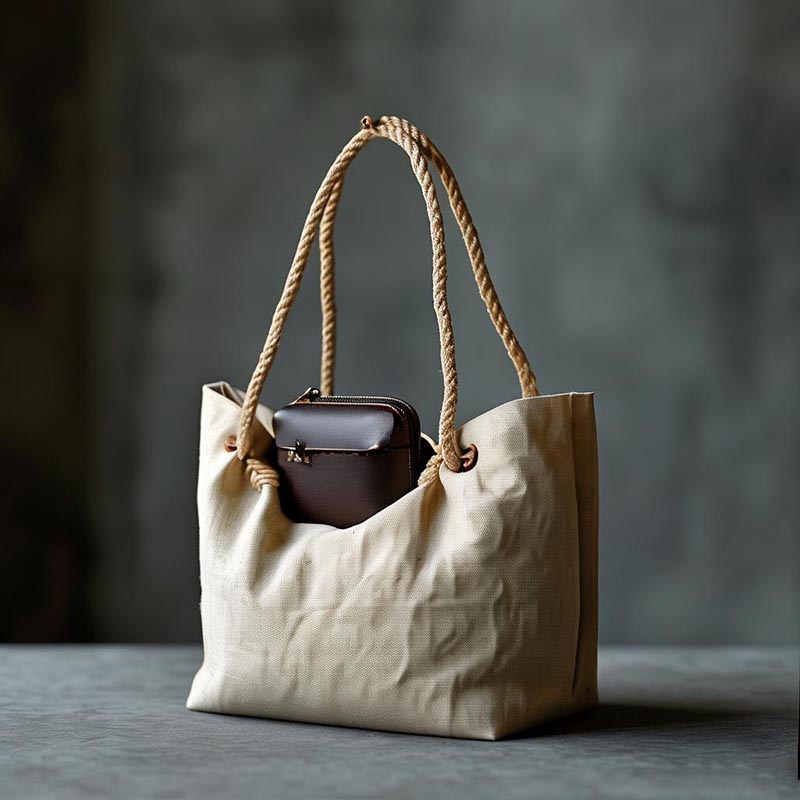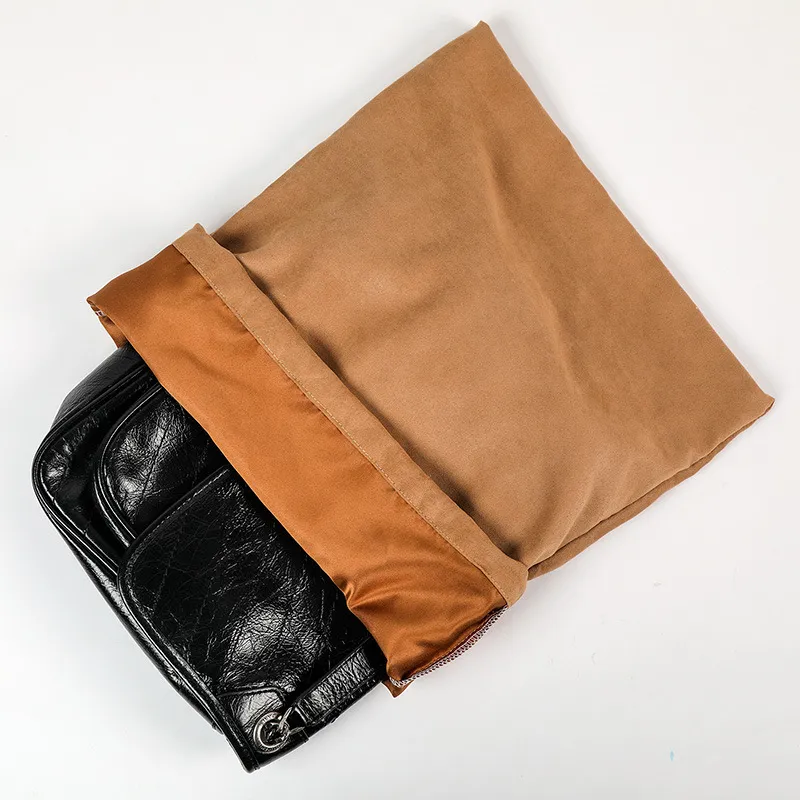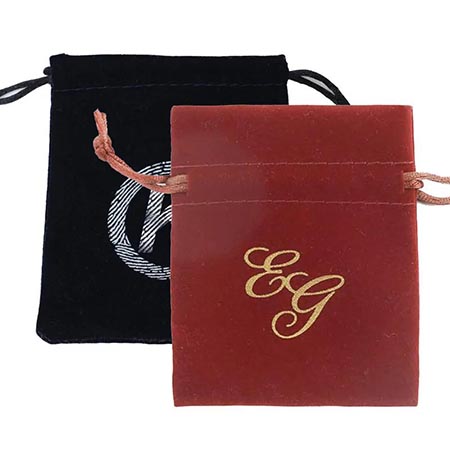Reinventing Luxury Packaging Philosophy: How Drawstring Bags Amplify Value for Leather Goods Brands
In today’s fiercely competitive luxury market, packaging has long transcended its traditional protective role to become a silent declaration of brand values. As classic wooden boxes lose favor due to high costs, transport fragility, and environmental concerns, a new wave of “sustainable luxury” is reshaping global packaging norms. According to the 2024 Global Luxury Consumer Report, 73% of high-end consumers now prefer packaging that combines practicality with eco-friendliness.
With their adaptable form and cost efficiency, drawstring bags are rewriting the rules of packaging in the luxury leather goods industry. These bags can replicate the texture of genuine leather through material innovation, seamlessly integrate into everyday life through thoughtful design, and at less than one-third the cost of traditional gift boxes, exponentially boost brand visibility.
Why Are Top Brands Switching Packaging? 3 Inescapable Realities
(Industry trends revealed through data)
Cost Pressure
- Traditional wooden boxes account for 12–15% of luxury handbag costs, and up to 20% for small leather goods.
- Transport damage rates: Wooden boxes 8.3% vs. drawstring bags 0.7% (Source: China Packaging Association, 2023)
Environmental Policy Push
- Starting 2024, the EU imposes a €0.8/kg environmental tax on non-degradable packaging.
- Case: A Chinese leather brand saw customs clearance speed improve by 2 days after switching to washable drawstring bags.
Changing Consumer Behavior
- 72% of luxury buyers keep reusable packaging (McKinsey 2024 Report).
- On TikTok, #LuxuryPackagingHacks has surpassed 1.6 billion views.
The 5 Secrets to Why Drawstring Bags “Look Expensive”
(Material and craftsmanship breakdown)
| Luxury Tier |
Recommended Materials |
Cost/Unit (CNY) |
Suitable Products |
| Entry-Level Luxe |
320g canvas + zinc alloy toggles |
¥6–8 |
Wallets / Card Holders |
| Mid-Tier Premium |
Faux suede + vegetable-tanned leather cord |
¥12–15 |
Clutches / Belts |
| Ultra High-End |
Silk lining + full-grain leather trims |
¥25–35 |
Limited Edition Handbags |
Value-Added Techniques:
- Glow-in-the-dark logo coating (+¥1.2/unit)
- Thermo-sensitive color change: hidden pattern appears with touch (+¥3.5/unit)
- Embossed faux crocodile texture (+¥2.8/unit)
Pitfall Avoidance Tips:
- Avoid glossy PVC (cheap-looking)
- Drawstring diameter ≥ 5mm (for durability)
- Darker colors resist staining better than light tones
Match the Right Material to Make Packaging and Product a Perfect Pair
(How to make fabric bags feel truly luxurious)
Material Upgrades
- Faux leather fabrics like PU and microfiber offer genuine leather feel at 60% lower cost.
- Dual-layer design: Jacquard fabric outside for elegance, velvet lining for product protection.
- Waste leather reuse: Leftover leather strips from production can be braided into drawstrings.
- Case: An Italian brand reused scrap leather for knots, reducing bag cost by 15%.
Detail Enhancements
- Branded metal tags (max 3cm to avoid scratching the product)
- Color-matched metallic drawstring ends
- Hidden snap closures at the mouth for dust protection—more refined than standard drawstrings
3 Smart Design Tricks to Make Customers Keep the Packaging
(Maximize reuse rate through functional design)
Transform into Daily Items
- Foldable tote design (inspired by LV’s pouch-folding technique)
- Internal compartments to convert into a makeup bag or tech pouch
- Case: A niche French brand found 60% of users reused their drawstring bags.
Add Ritualistic Design Elements
- Hidden card slot inside for personalized messages
- Branded sticker set for DIY customization
- Magnetic closure for smoother opening, replacing traditional pull cords
Eco-Marketing Strategy
- Print “Green Statement” on the bag: “Each reuse reduces 50g of carbon emissions.”
- Free drawstring bag cleaning service to drive store revisits
- Trade-in program for used bags → new bag discount (boosted return rate by 40%)
High Impact at Low Cost: Value-Added Services
(Make drawstring bags feel more premium than gift boxes)
| Traditional Gift Box Issue |
Drawstring Bag Solution |
| Bulky & fragile during transit |
Foldable design saves 50% on logistics costs |
| Discarded post-unboxing |
Reusability = long-term brand exposure |
| Long lead times |
3-day sampling, MOQ as low as 50 pieces |
Real Case Example:
A cross-border e-commerce client replaced wooden boxes with drawstring bags:
- Packaging cost dropped from ¥38/set to ¥9.5/set
- Return rate dropped by 12% (soft packaging = better compression resistance)
- Social media unboxing posts increased (users showcased the multi-purpose packaging)
Wallet-Proven Success: 6 Real Customer Cases
| Brand Type |
Packaging Upgrade |
Key Outcome |
| Cross-Border E-com |
Waterproof drawstring bag |
Shipping cost ↓40%, bad reviews ↓18% |
| Domestic Affordable Luxe |
Added DIY embroidery service |
Order value ↑25%, UGC tripled |
| Niche EU Brand |
NFC chip integration |
Website traffic +1,300 visits/month |
| Japanese Artisan |
Blended washi paper fabric |
Gained placement in Tsutaya bookstores |
| Middle East Custom Gifting |
Swarovski crystal embellishment |
Gift orders rose to 67% of total |
| Cultural Heritage Co-branding |
Embroidery + tassels |
Successfully qualified for government grant |
Conclusion
From cost optimization to brand storytelling, drawstring bags offer luxury leather brands a disruptive new packaging paradigm. They resolve pain points around environmental regulations and logistics fragility, while extending packaging lifespan through multifunctional design that embeds the brand in high-frequency scenarios like commuting, travel, and wellness.
When thermo-reactive patterns and modular accessories give packaging interactive appeal, and heritage craft meets smart tech like NFC, packaging evolves into an integral part of the product ecosystem. This quiet revolution proves that true luxury isn’t about excess—it’s about precisely aligning with consumer perceptions of value at every touchpoint.




 We like to do design according to all the customers' requirements, or offer them our new designs. With strong OEM/ODM capabilities, we can fill your sourcing demands.
We like to do design according to all the customers' requirements, or offer them our new designs. With strong OEM/ODM capabilities, we can fill your sourcing demands.